Hand Axe:Used for sharpening stakes, cutting small limbs or brush. Also used to drive in small stakes, grade stakes, and corner stakes. The hand axe is similar to the single bit axe but smaller. The handle is 16 to 18 inches long.
(Common Tools-Axes) |
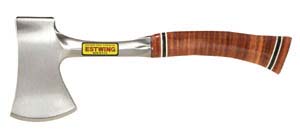
|
Single Bit Axe:Used for building fences, cutting small trees and construction work. This very versatile tool should not be used as a sledge hammer on wedges or iron stakes. Handles are usually of hickory, 36 inches long, oval in cross section and shaped for good balance.
(Common Tools-Axes) |

|
Double Bit Axe:Used to cut small trees, trim logs and tops. Its two cutting edges should not be left in a vertical position because of the safety hazard. The 36 inch handle is oval and straight.
(Common Tools-Axes) |
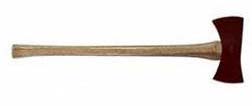
|
Flat Pry Bar:Contoured flat bar, with beveled nail slots at each end. Also called a Wonder Bar (Stanley brand name).
(Common Tools-Bars) |

|
Ripping Bar:Usually it is of octagon tempered steel. Used for demolition and pulling large nails. Also called a Wrecking Bar.
(Common Tools-Bars) |
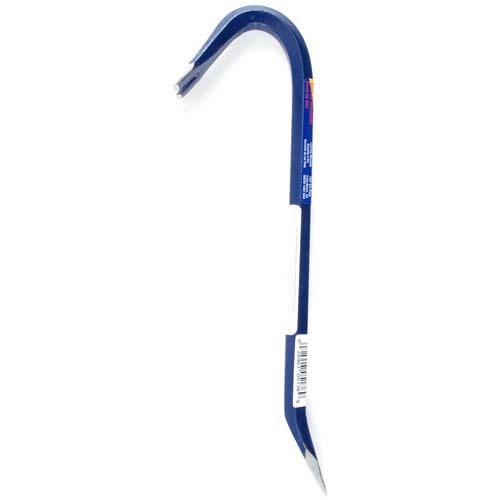
|
Pry or Fitting Bar:It has a long round taper at one end and a curved pry hook at the other.
(Common Tools-Bars) |
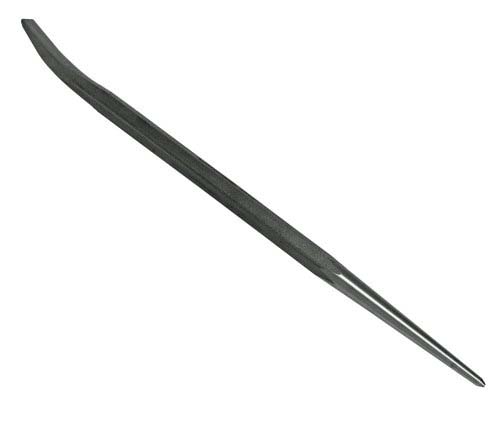
|
Crow Bar:It is normally four or five feet long with one end tapered round and the other end with a chisel point.
(Common Tools-Bars) |
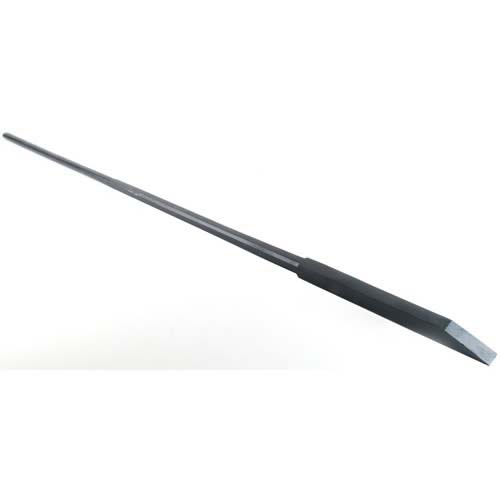
|
Parts Brush:Metal handle is usually sealed at both ends to enable brush to float in solvent to prevent losing brush in solvent tank.
(Common Tools-Brushes) |

|
Push Broom:Handles are 7/8 inch in diameter 4 to 5 feet long and are threaded into broom body or bolted on.
(Common Tools-Brushes) |
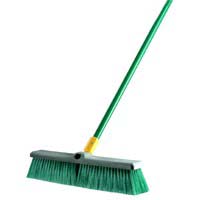
|
Wire Brush:Used for cleaning metal parts to be welding, cleaning machinery parts and removing slag and rust.
(Common Tools-Brushes) |
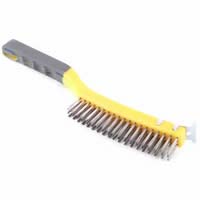
|
Bench Brush:The overall length is 16 inches.
(Common Tools-Brushes) |
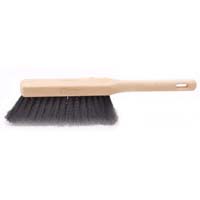
|
Pipe Clamp:A clamp made with a steel pipe.
(Common Tools-Clamps) |

|
Bar Clamp:Bar type clamp has quick non slip adjustment to approximate size; then screws tight to apply pressure.
(Common Tools-Clamps) |
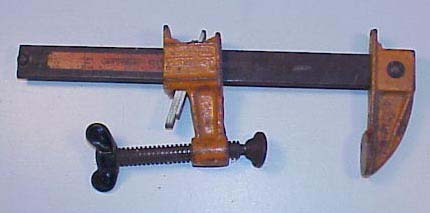
|
"C" Clamp Locking Pliers:Used for clamping irregular shapes quickly and firmly when welding or fastening.
(Common Tools-Clamps) |
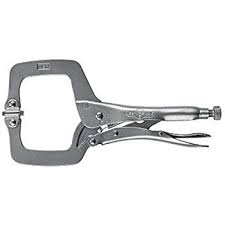
|
Locking Welding Clamp:Works well when clamping two pieces adjacent to each other or at 90 degree angles.
(Common Tools-Clamps) |
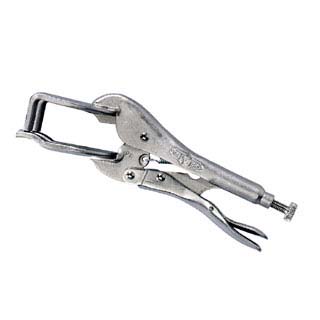
|
"C" Clamp:The screw has a sliding bar or a thumb screw at one end and usually a ball and socket pad at the other Sizes range from 2 to 12 inches.
(Common Tools-Clamps) |

|
Face Shield:Eye protection that covers the entire face. Often used with safety glasses when full protection of the face is required.
(Common Tools-Miscellaneous) |

|
Safety Glasses:Eye protection that covers eyes only. Safety glasses have side shields. The California State Educational Code states that all students, teachers, and visitors in a school shop must wear eye protection.
(Common Tools-Miscellaneous) |
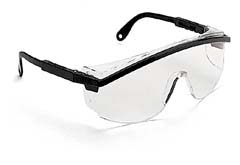
|
Safety Goggles:Eye protection that covers eye glasses.
(Common Tools-Miscellaneous) |

|
Hog Ringer:It is some what like a pair of pliers except the jaws of the ringer has special slots for holding the ring.
(Common Tools-Miscellaneous) |
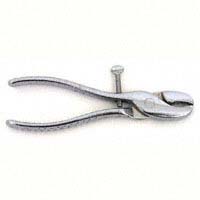
|
Air Compressor:Used for supplying compressed air for spray painting and for operating air tools at low pressures (less than 100 psi).
(Common Tools-Miscellaneous) |

|
Chain Saw:Most chain saws are gasoline powered, but smaller pruning saws can be electric or hydraulically powered.
(Common Tools-Miscellaneous) |
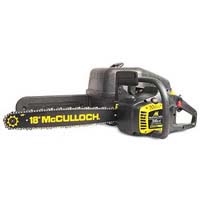
|
Contractors Wheelbarrow:Used widely in the construction industry. Typical capacity 1/5 cubic yard. Wheel is pneumatic.
(Common Tools-Miscellaneous) |

|
Bolt Cutter:The toggle and lever joints develop great mechanical advantage. Commonly used to cut bolts, chain, and reinforcing bar.
(Common Tools-Miscellaneous) |

|
Staple Gun:Heavy duty and light utility models are available driving 3/16 to 1/2 inch staples.
(Common Tools-Miscellaneous) |
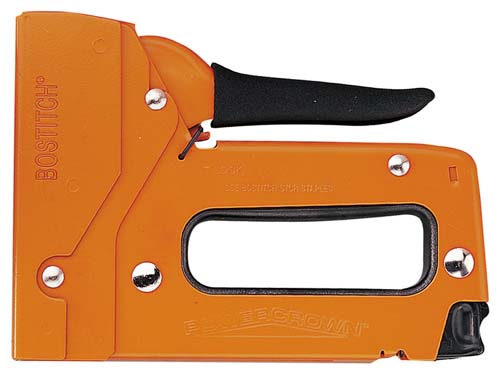
|
Battery Pliers:Used for removing battery terminals. The end clearance prevents cell-cover damage.
(Common Tools-Pliers) |
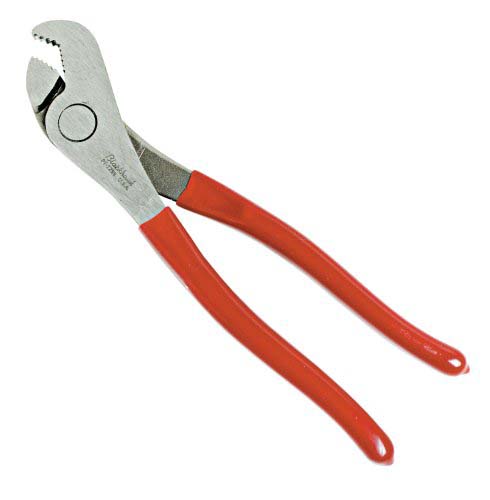
|
Locking Pliers:Locks with a toggle action that holds until the lever is opened. Commonly called Vise-Grip pliers.
(Common Tools-Pliers) |

|
Water Pump Pliers:The jaws are adjustable to 2 inches.
(Common Tools-Pliers) |

|
Slip Joint Combination Pliers:Used for general purpose work, for holding flat or round stock, and for cutting soft wires.
(Common Tools-Pliers) |

|
Diagonal Cutting Pliers:It has curved handles, lap joined; and diagonal cutting jaws.
(Common Tools-Pliers) |

|
Retaining Ring Pliers:User for remove and install internal and external retaining (snap) rings.
(Common Tools-Pliers) |
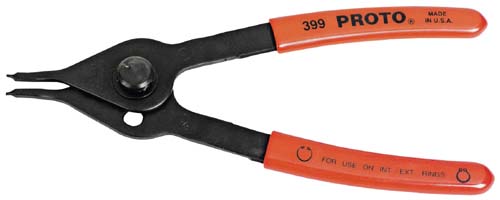
|
Fence Pliers:Grips between the handles hold the wire tightly while leverage is exerted against the fence post to stretch the wire fairly tight.
(Common Tools-Pliers) |

|
Prick Punch:The punch should be sharp and ground to 30 degrees.
(Common Tools-Punches) |

|
Hole Punch:These punches are used to make holes in gaskets and other materials. Also called a belt punch.
(Common Tools-Punches) |

|
Center Punch:It is manufactured in various sizes and lengths.
(Common Tools-Punches) |

|
Drift Punch:The shank is tapered.
(Common Tools-Punches) |

|
Pin Punch:This punch has a long, straight shank, the diameter of which designates the size. Used to remove bolts and pins.
(Common Tools-Punches) |
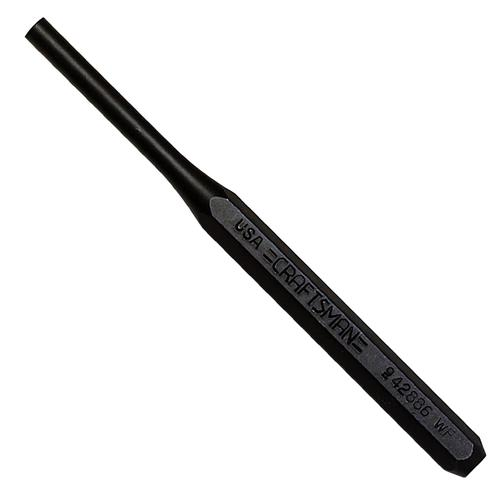
|
Leather Punch:The handles are similar to pliers. Used to punch holes in soft materials like leather and rubber.
(Common Tools-Punches) |
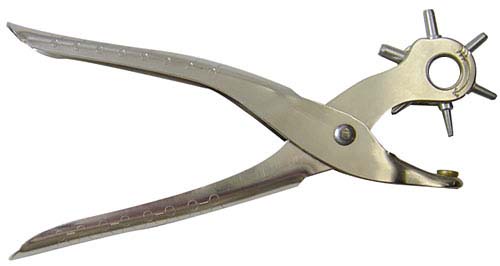
|
Slotted Screwdriver:Used mostly in woodworking applications.
(Common Tools-Screwdrivers) |

|
Torx Head Screwdriver:Also used on appliances, lawn and garden, and electronic equipment.
(Common Tools-Screwdrivers) |

|
Stubby Screwdriver:It comes in slotted and Phillips, and has a blade length of 1 1/4 to 1 1/2 inches long.
(Common Tools-Screwdrivers) |

|
Square Recess Screwdriver:Each screwdriver is color coded for easy size identification. Commonly used to drive deck screws and used with electrical devices.
(Common Tools-Screwdrivers) |

|
Screwdriver Bits:Available in slotted, Phillips, square, and torx drives for power screwdrivers. Shank is hexagonal.
(Common Tools-Screwdrivers) |

|
Phillips Screwdriver:Always select the correct size for the correct application.
(Common Tools-Screwdrivers) |

|
Offset Screwdriver:Used where it is difficult to reach the screw head with a common or standard screwdriver.
(Common Tools-Screwdrivers) |
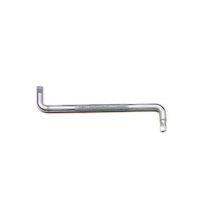
|
Nut Drivers:This is a very popular tool in the electrical and sheet metal industry.
(Common Tools-Screwdrivers) |

|
Clutch Driver:This is a specialty drive that fits screws used in mobile homes, boats, recreational vehicles, and electric motors.
(Common Tools-Screwdrivers) |
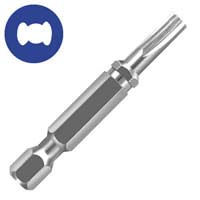
|
Square Point Shovel:Used for scooping materials such as sand and gravel. Typically the handle about 50 inches long.
(Common Tools-Shovels, Rakes, Picks) |

|
Round Point Shovel:A shovel used for digging. Typical handle length approximately 50 inches.
(Common Tools-Shovels, Rakes, Picks) |

|
Scoop Shovel:The handle can be a short capped ferrule “0” type or 54 inch long handle.
(Common Tools-Shovels, Rakes, Picks) |

|
Irrigating Shovel:The same as the round point except the blade is almost straight with the handle.
(Common Tools-Shovels, Rakes, Picks) |

|
Bow Rake:Has 15, 2 1/2 inch pointed teeth attached at 90 degrees to a 5 foot ferruled handle.
(Common Tools-Shovels, Rakes, Picks) |
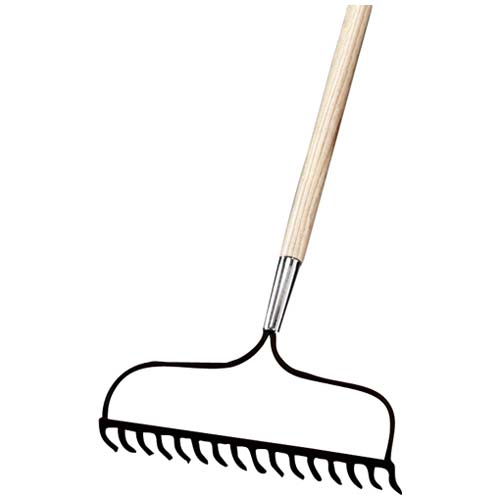
|
Pick Mattocks:Similar to the cutter mattocks except one end of the blade comes to a sharp point for breaking or digging in hardpan or very hard soil.
(Common Tools-Shovels, Rakes, Picks) |
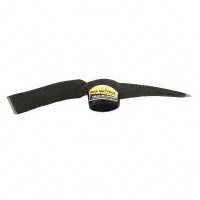
|
Cutter Mattocks:The blades ends are rotated 90 degrees and oval hole is in the center for the handle which is sold separate.
(Common Tools-Shovels, Rakes, Picks) |
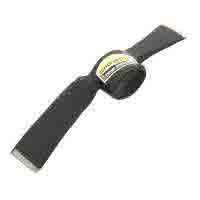
|
Clay Picks:The handles for all picks are 32 inches long and are larger at the head or blade end.
(Common Tools-Shovels, Rakes, Picks) |
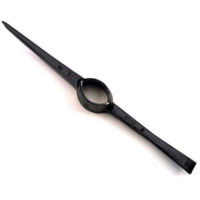
|
Posthole Auger:It is operated by rotating the handle.
(Common Tools-Shovels, Rakes, Picks) |
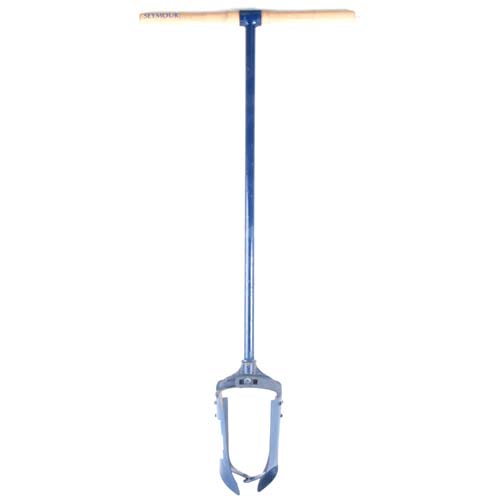
|
Posthole Digger:It is operated by thrusting the points into the soil and spreading the handles to remove the soil. Also called a Clam Shell.
(Common Tools-Shovels, Rakes, Picks) |
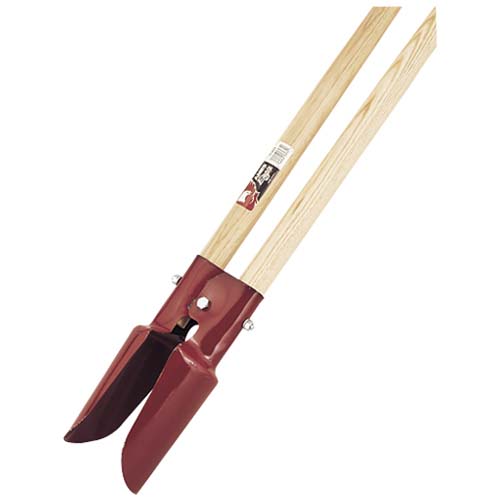
|
Woodworker's Vise:The flat smooth jaws open up to 12 inches. Jaws may be lined with wood.
(Common Tools-Vises) |
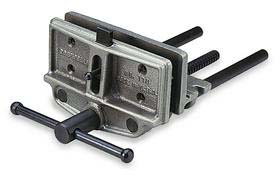
|
Machinist's Vise:A bench mounted vise for metal with a swivel base and replaceable jaws. It should not be used for hammering or bending metal. Also called a Bench Vise.
(Common Tools-Vises) |

|
Drill Press Vise:Drilling is safe and more accurate when a vise is used, and fewer drill bits are broken.
(Common Tools-Vises) |
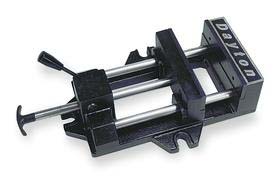
|
Open End Wrench:Both ends of the wrench are open but are of different sizes.
(Common Tools-Wrenches) |

|
Combination End Wrench:The reason for the popularity of this wrench is that it has the advantage of having both open and box ends.
(Common Tools-Wrenches) |

|
Tubing Wrench:The box at each end of the wrench is 6 point only. Also called a flare nut wrench.
(Common Tools-Wrenches) |
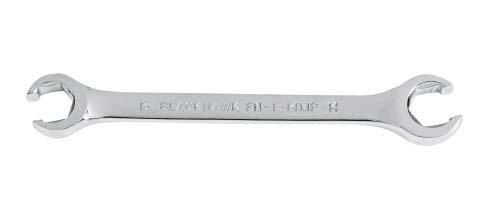
|
Box End Wrench:Wrench is available in 12 and 6 point ends.
(Common Tools-Wrenches) |

|
Eight Point Socket:Has 8 points and is used on square nuts found on farm machinery.
(Common Tools-Wrenches) |

|
Deep Socket:The deep socket is made in standard, thin, and extra thin walls, with 6 or 12 point openings and with 3/8, 1/2 or 3/4 inch drive.
(Common Tools-Wrenches) |

|
Six Point Socket:The socket has 6 points inside to fit over hexagonal nuts.
(Common Tools-Wrenches) |
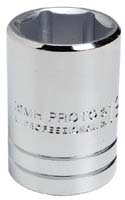
|
Twelve Point Socket:The socket has thin walls to fit in tight places.
(Common Tools-Wrenches) |

|
Flex Socket:This permits working at various angles.
(Common Tools-Wrenches) |
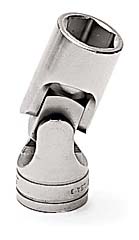
|
Extension Bar:Used to connect, the socket wrench to the ratchet handle to give working clearance, and are 3 to 20 inches long.
(Common Tools-Wrenches) |

|
Ratchet Handle:The ratchet speeds up the work. Common drive sizes 1-4”-3/4”.
(Common Tools-Wrenches) |

|
Speed Handle:Used to rapidly remove a nut or bolt. Common drive sizes 1-4”-3/4”.
(Common Tools-Wrenches) |

|
Slide Bar Handle:Used as a “T” or “L” handle and is normally used with the extension.
(Common Tools-Wrenches) |

|
Flex Handle:The end that fits into the socket is swivel hinged, and the other end has a hole with a sliding cross bar to permit use of the wrench at an angle.
(Common Tools-Wrenches) |

|
Socket Adaptor:Allows the use of larger drive sockets with smaller socket drives; i.e., 1/2 inch drive socket and 3/8 inch drive ratchet.
(Common Tools-Wrenches) |

|
Universal Joint:It makes work possible in restricted places where the wrench cannot be aligned with the bolt.
(Common Tools-Wrenches) |
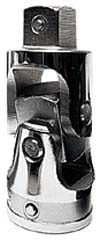
|
Hex Key:This wrench is made of hexagon stock with one end bent to a 90 degree angle.
(Common Tools-Wrenches) |
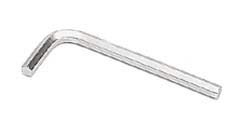
|
Chain Wrench:It is made in several sizes ranging from 13 ¾ to 87 inches long, and will handle pipe from 1/8 to 18 inches in diameter.
(Common Tools-Wrenches) |

|
Strap Wrench:The adjustable strap is useful in rotating large diameter objects like filters.
(Common Tools-Wrenches) |

|
Adjustable Wrench:Size is designated by inches in length.
(Common Tools-Wrenches) |

|
Sponge Rubber Float:Must be dipped continuously in water when working plaster to keep the plaster from adhering to the rubber.
(Concrete Tools And Supplies) |
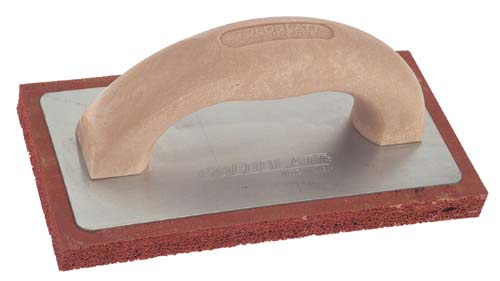
|
Mud Pan:Used mostly with small trowels or putty knifes.
(Concrete Tools And Supplies) |
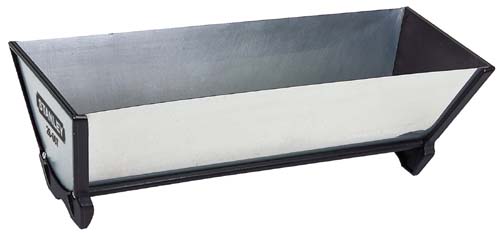
|
Corner Trowel:Size is 2 1/2 by 2 1/2 wide and 6 inches long. Used to finish corner in curbs, steps, etc. The handle placement determines if the trowel is outside or inside. Outside corner trowel is also called a step trowel.
(Concrete Tools And Supplies) |
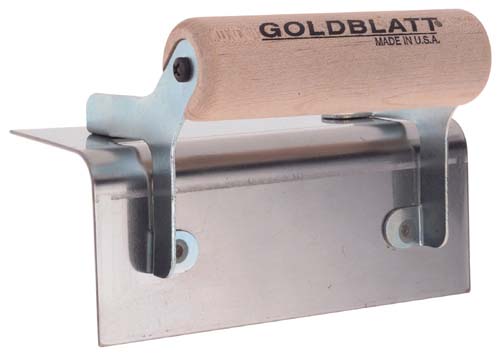
|
Mortar Hoe:It also has a 5 1/2 foot handle and holes in the hoe to aid mixing.
(Concrete Tools And Supplies) |

|
Hawks:The size is 13 x 13 inches square. Use to carry mortar.
(Concrete Tools And Supplies) |

|
Concrete Tampers:A tubular steel frame handle is attached to the top which allows a person to operate the tamper while walking in the concrete. Also called a Jitterbug.
(Concrete Tools And Supplies) |

|
Groover:It is 2 7/8 inches wide and 6 inches long with the ridge being 1/2 inch deep and 1/2 inch wide. Use to place groves in concrete slabs.
(Concrete Tools And Supplies) |

|
Concrete Edger:The ends may be curved up slightly. Used to finish the edges of concrete.
(Concrete Tools And Supplies) |
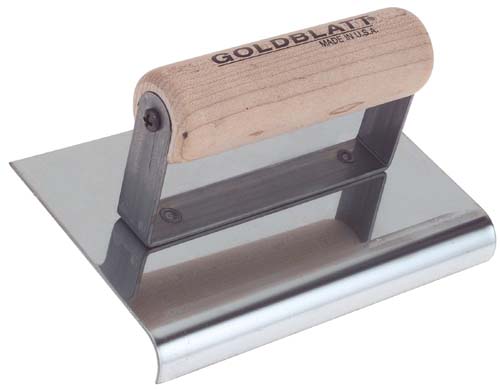
|
Fresno Trowel:This large finish trowel also has a long detachable handle.
(Concrete Tools And Supplies) |

|
Finishing Trowel:The finishing trowel is made of steel and is 4 inches wide by 14 inches long.
(Concrete Tools And Supplies) |

|
Reinforcing Bar:Available in 20, 30, and 40 foot lengths. Common sizes (diameter) of 3/8" to 1" are use in small construction projects.
(Concrete Tools And Supplies) |

|
Star Drill:It is operated by striking with a hammer while rotating by hand.
(Concrete Tools And Supplies) |

|
Masonry Bit:Used to drill in brick, block, and concrete. The tip is treated with tungsten carbide to resist heat and wear.
(Concrete Tools And Supplies) |
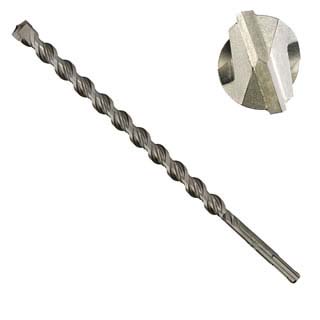
|
Bull Float:A large float with a long detachable handle. Made from wood or magnesium. Common sizes are 8 inches wide by 36 or 48 inches long.
(Concrete Tools And Supplies) |

|
Hand Float:It is 4 to 5 inches wide and 13 inches long. Floats are used for rough finishing.
(Concrete Tools And Supplies) |

|
Brick Chisel:Blade is 3 1/2 inches wide, overall length is 7 inches.
(Concrete Tools And Supplies) |
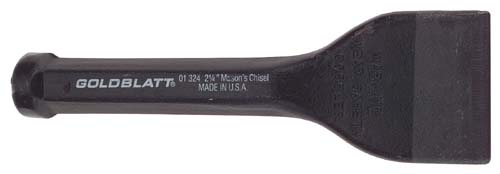
|
Brick Trowel:It is pointed and measures 4 ¾ inches by 11 inches.
(Concrete Tools And Supplies) |

|
Brick Jointer:The jointer is bent at each end at about 20 degrees to allow the mason to use one end as a handle and the other as a jointer. The tool is used to finish the joints between bricks.
(Concrete Tools And Supplies) |

|
Brick Layer's Hammer:The wedge shaped end is for scoring and cutting brick, and the other end is for tapping bricks into place when leveling.
(Concrete Tools And Supplies) |

|


































































































